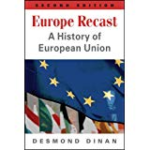What the United States could learn from France about regional transit
I am very grateful to Magwyer Grimes -a senior studying international studies and economics- for this guest post:
I’ve recently had the chance to study abroad in Lyon, France for the 2021-22 academic school year and by far the most common question that I receive from Americans and French people alike is: what is the biggest cultural difference between the United States and France? Much to their dismay, and instead of talking about the language or the cuisine, I always point to the difference in transportation systems. Upon hearing this, their eyes usually start to glaze over because it sounds like such a minute difference but, in fact, it touches every aspect of daily French and American life. I found myself looking forward to catching a train to Paris or even simply using the metro to get to work. A stark contrast from the dreaded car commute to work or the overhyped 5-hour road trip to Seattle.
In the United States, the decision to travel between cities or regions essentially boils down to a choice between the plane or the automobile. Both of which are less than ideal in terms of ecological and socioeconomic impacts. Ecologically, planes are an environmental disaster, with one average long-haul flight producing more emissions per passenger than an average person produces in an entire year in dozens of countries. Socioeconomically, someone without a car in the United States is functionally excluded from larger labor markets and, to a large extent, having a social life as many cities lack even basic public transit.
Well, I hear you ask, what about Amtrak? Don’t they operate interregional routes across the United States? Amtrak does indeed operate many interregional passenger rail routes across the United States, but these routes are often plagued by high ticket prices, slow operating speeds, frequent service delays and maintenance issues resulting from decades of disinvestment. On several occasions, I’ve had the chance to take the Oregon Amtrak route from Portland to Salem which, in theory, should be a simple one-hour train ride in a straight line with few complications. Every time that I’ve taken it, however, I’ve been left sitting in the train for an extra hour or two due to maintenance issues. What’s more, the ticket price generally exceeds the price that gas would be for an alternate one-hour car ride.
In France, the Amtrak interregional equivalent is called the RER, the Réseau Express Régional (English: Regional Express Network). The RER operates more daily trains than Amtrak and at a fraction of the cost for the consumer. Depending on the region, one could expect to pay around 4 or 5 euros for a one-hour interregional train that comes at all hours of the day. A quick search on Amtrak’s website, however, shows that the Portland to Salem route has only three trains running the entirety of tomorrow, Friday June 25th, with ticket prices ranging from $17 to $45.
The United States is also severely underdeveloped in terms of high-speed rail services. There is currently only one high-speed route in the United States and that is along the Northeast Corridor connecting Boston, New York City, and Washington D.C. with 13 other intermediate stops depending on the train schedule. It is telling, however, that this corridor is the busiest passenger rail line in the United States and highly successful with over 260 million trips made on the Northeast Corridor each year and a comfortable profit margin on Amtrak’s Acela Express route which runs the fastest trains in Amtrak’s portfolio.
It’s clear that when provided with safe, affordable, and fast regional transit options, Americans have no apprehensions about taking advantage of these services. But decades of neglect and weak levels of investment in passenger rail have left much of America with the glorified highway system as their only option. However, recent developments give us reasons to be hopeful.
The Infrastructure Investment and Jobs Act passed in late 2021 allocates a historic $66 billion over 5 years to upgrading the nation’s surface rail infrastructure. This alone won’t be sufficient in bringing the nation’s passenger rail up to par with that of other developed nations, but it’s a noticeable indication that things are changing in a nation previously known for its addiction to endless highway expansion. Lastly, new developments in states as diverse as California and Texas demonstrate the interest in high-speed passenger rail is growing. It will be up to us to maintain the pressure on our elected officials to ensure that these kinds of projects are encouraged and not killed off to maintain the preeminence of the interstate highway system.








